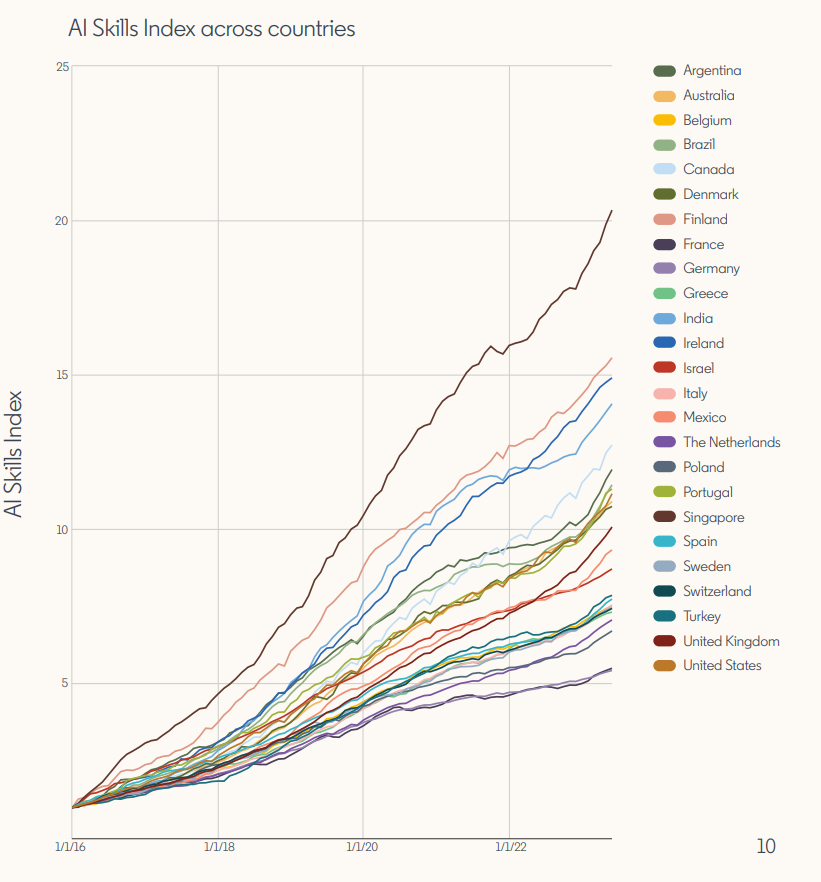The business network LinkedIn has published some statistics on artificial intelligence. The growth on the platform is massive thanks to ChatGPT.
One statistic, in particular, describes the impact of ChatGPT on the AI market: According to LinkedIn, since the launch of ChatGPT in November 2022, English-language job postings related to AI technologies such as GPT or ChatGPT have increased 21-fold worldwide. In contrast, profiles claiming AI skills have only increased 9-fold since January 2016.
This shows the huge growth spurt that ChatGPT's public success has brought to the AI industry, even though major technology companies like Google and Microsoft were already investing heavily in AI before ChatGPT.
Executives believe that people skills will become more important in the future
With the increasing automation of individual tasks, 92 percent of U.S. decision-makers believe that people skills, such as the ability to interact effectively with colleagues or customers, will become more important.
Just under half believe that generative AI will increase productivity. 44 percent plan to expand their use of AI in the coming year. However, only four percent say they plan to change job profiles or lay off employees because of AI.
The platform is also increasingly focused on AI: since the beginning of April, the number of posts related to generative AI has increased by 25 percent each month. Profiles mentioning generative AI keywords (e.g., "GAI," "ChatGPT," "Prompt Engineering," "Prompt Crafting") have increased by 75 percent per month since the beginning of the year.
In particular, LinkedIn users in Singapore (20x), Finland (16x), Ireland (15x), India (14x), and Canada (13x) are attributing AI skills to themselves.

Profiles that could fill an AI job ("AI Talents") have increased from 3 to 17 per 1000 members since 2016, according to LinkedIn. In the U.S., the number of "Head of AI" roles has nearly tripled in the past three years.
AI profiles in the U.S. are most common in the technology, information, and media sector (2.2%), followed by education (1.2%), services (0.9%), financial services (0.9%), and manufacturing (0.8%).






